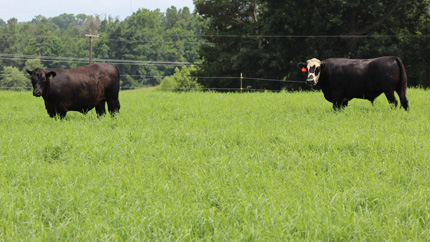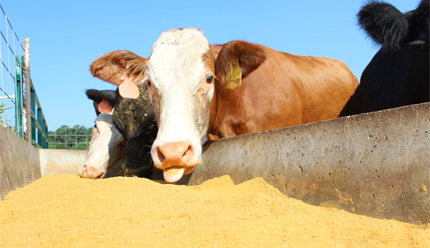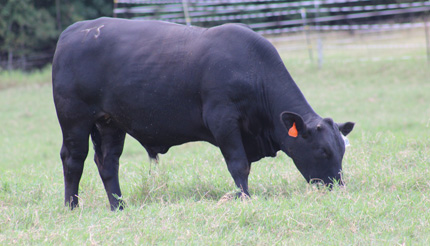Soil Science Society of America
5585 Guilford Road • Madison, WI 53711-5801 • 608-273-8080 • Fax 608-273-2021
www.soils.org
Twitter | Facebook
NEWS RELEASE
Contact: Hanna Jeske, Associate Director of Marketing and Brand Strategy, 608-268-3972, hjeske@sciencesocieties.org
Waste not, want not
June 8, 2017 - Making a living raising cattle isn’t as simple as just buying a herd and turning it out to pasture. Cattle require specific diets to maintain proper nutrition and weight gain. And how to do this in the most effective and efficient way possible has interested both ranchers and researchers for generations.
 Scientists in Texas are interested in how seasons affect how well cattle can digest a type of Bermuda grass, Tifton 85. In a recent study, they found that as seasons progress, the grass becomes harder to digest. However, by supplementing with the dried distillers’ grains, this effect can be minimized.
Scientists in Texas are interested in how seasons affect how well cattle can digest a type of Bermuda grass, Tifton 85. In a recent study, they found that as seasons progress, the grass becomes harder to digest. However, by supplementing with the dried distillers’ grains, this effect can be minimized.
Dried distillers’ grains are left over after ethanol production. They are what remains of the ground corn used for fermentation.
“Due to the ramp-up in ethanol production over the past few decades, there has been an abundance of this byproduct in the beef industry,” explains Monte Rouquette, a professor with Texas A&M AgriLife Research. “Originally viewed as a waste product of the industry, research began looking into other uses of the byproduct.”
He adds that using it as food for livestock is an efficient use of this product. The value-added aspect has moved the grains from wasted to wanted.
The dri ed grains are now commonly used as a relatively cheap source of feed. In some instances, it can replace primary feed ingredients like corn or soybeans. Some supplements provide additional energy, some more protein, and others minerals. The distillers’ grain is used for both protein and energy.
ed grains are now commonly used as a relatively cheap source of feed. In some instances, it can replace primary feed ingredients like corn or soybeans. Some supplements provide additional energy, some more protein, and others minerals. The distillers’ grain is used for both protein and energy.
How does this fit with the forage season? Tifton 85 Bermuda grass is a common forage grass across the south and southeast United States. However, as the plants mature, they become harder for livestock to digest. The cattle have a harder time extracting nutrients from the grass. The grains can help add back those nutrients.
The results of this study, conducted by W. Brandon Smith, point to a potential two-season grazing strategy, based on animal size, weight, and age. For example, lightweight animals could graze in the early summer without the grain supplement because the grass is able to give them the needed nutrients to thrive.
In the later part of the summer, the matured animals could graze with the distillers’ grain supplement. The grain would add back some of the nutrients the cattle lose out on when the grass is further into season. 
This research allows the scientists to determine the most effective and efficient way to use distillers’ grains as a supplement. They can learn how much is best to give, when is best to give it, and how much return it can provide a rancher.
“These data can then be used in an economic assessment to provide a baseline of potential responses from the use of a supplement,” says Rouquette. “This work sheds light on changes that occur chemically within the plant across the year that affect its digestibility.”
Read more about this work in Crop Science. The researchers’ work was primarily funded by Texas A&M AgriLife Research at Overton, and partially funded by a Beef Competitiveness Research Initiative grant from Texas A&M AgriLife Research.
Crop Scienceis the flagship journal of the Crop Science Society of America. It is a top international journal in the fields of crop breeding and genetics, crop physiology, and crop production. The journal is a critical outlet for articles describing plant germplasm collections and their use.